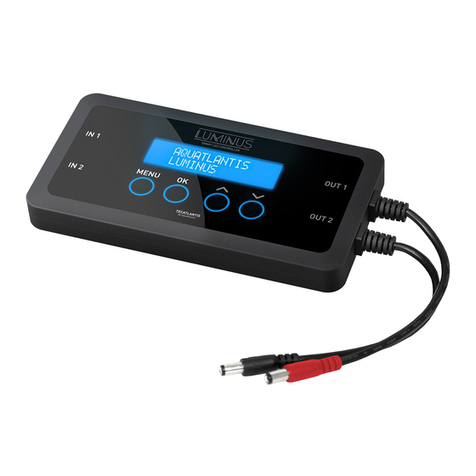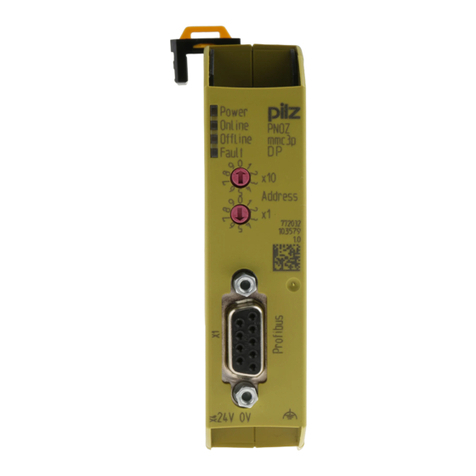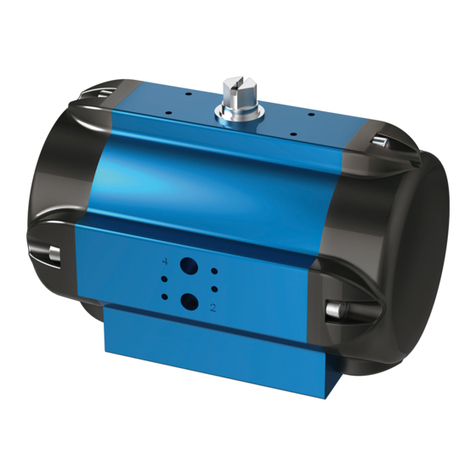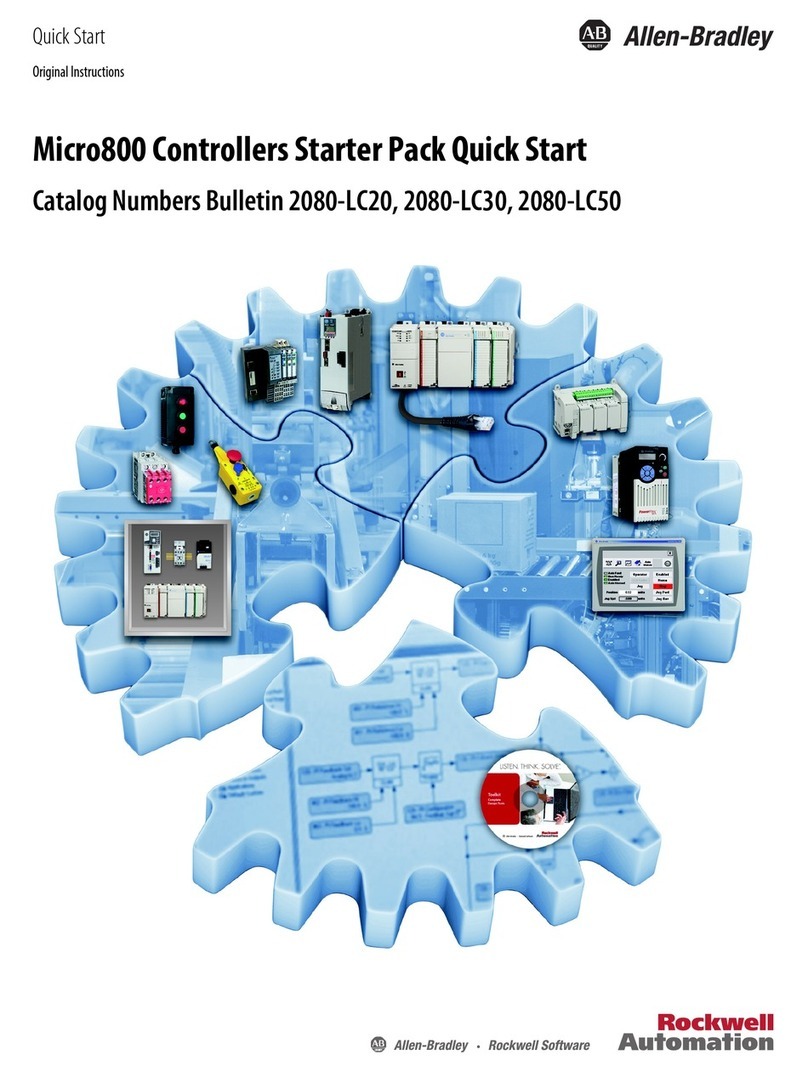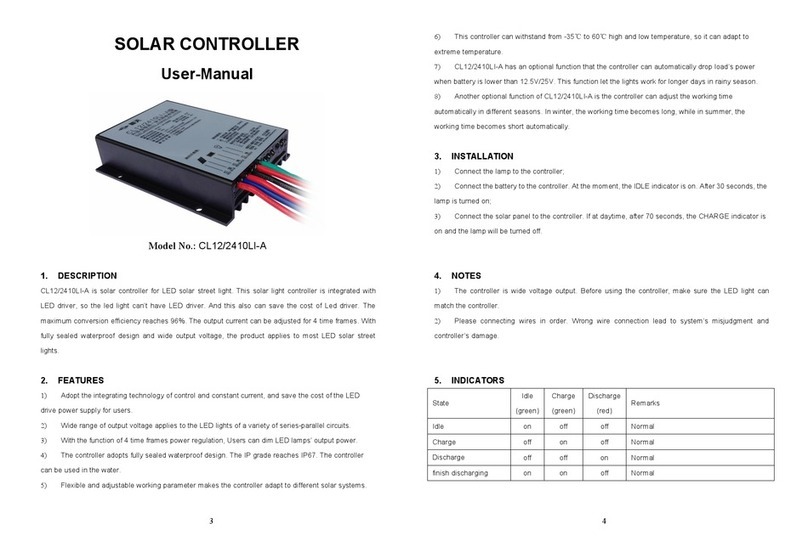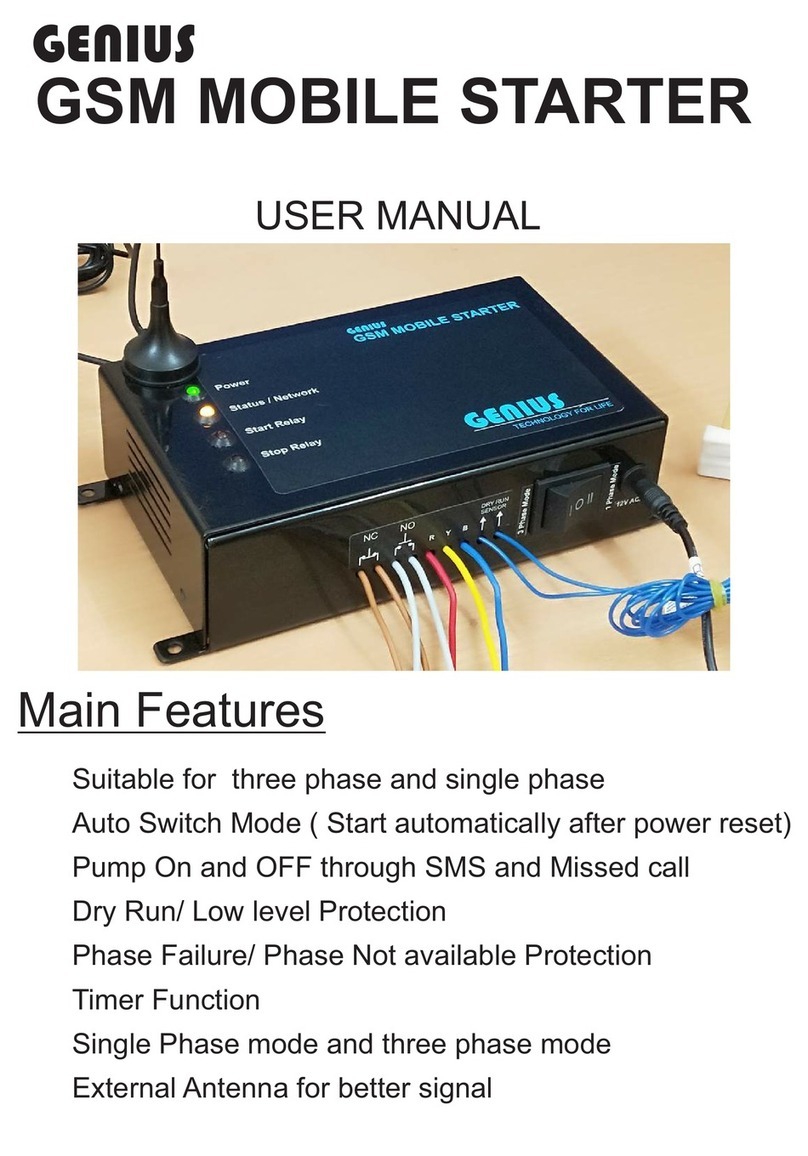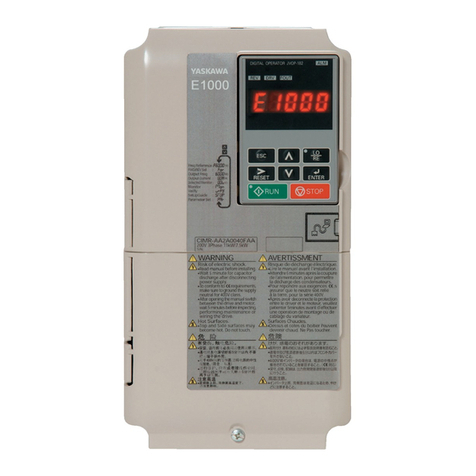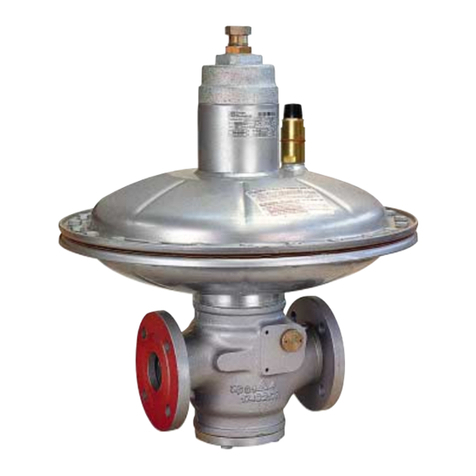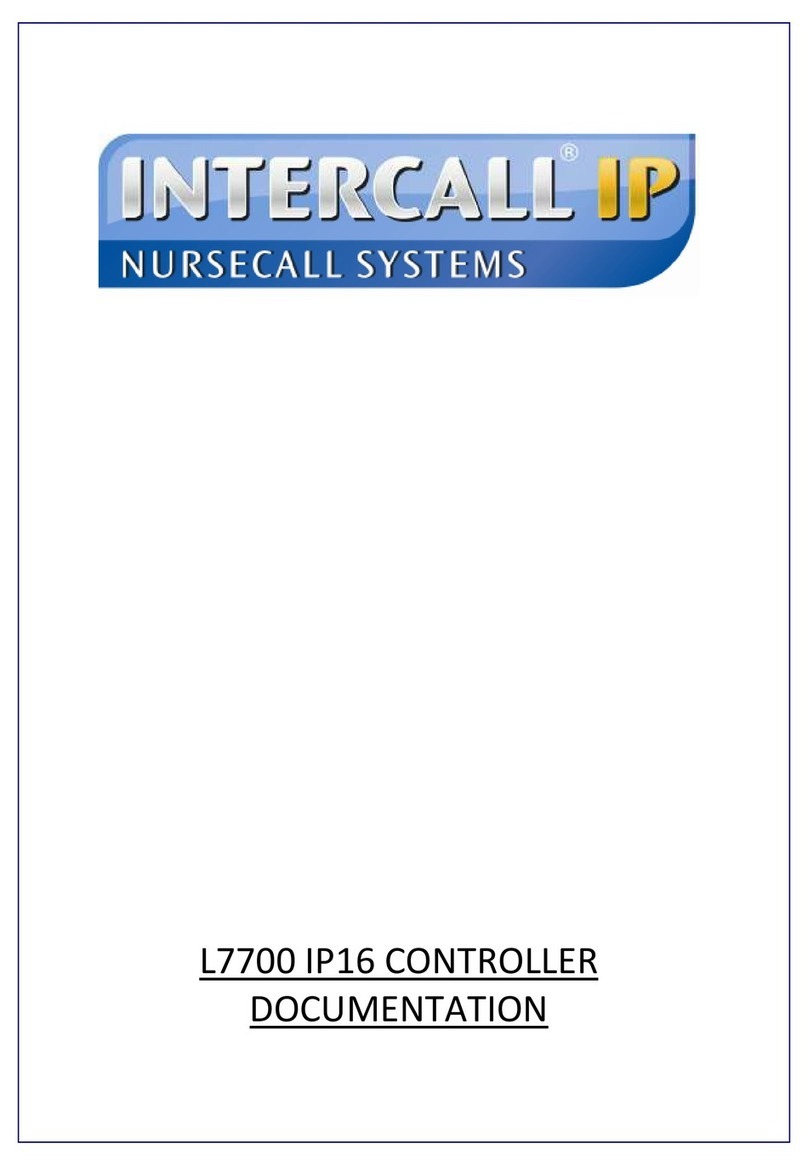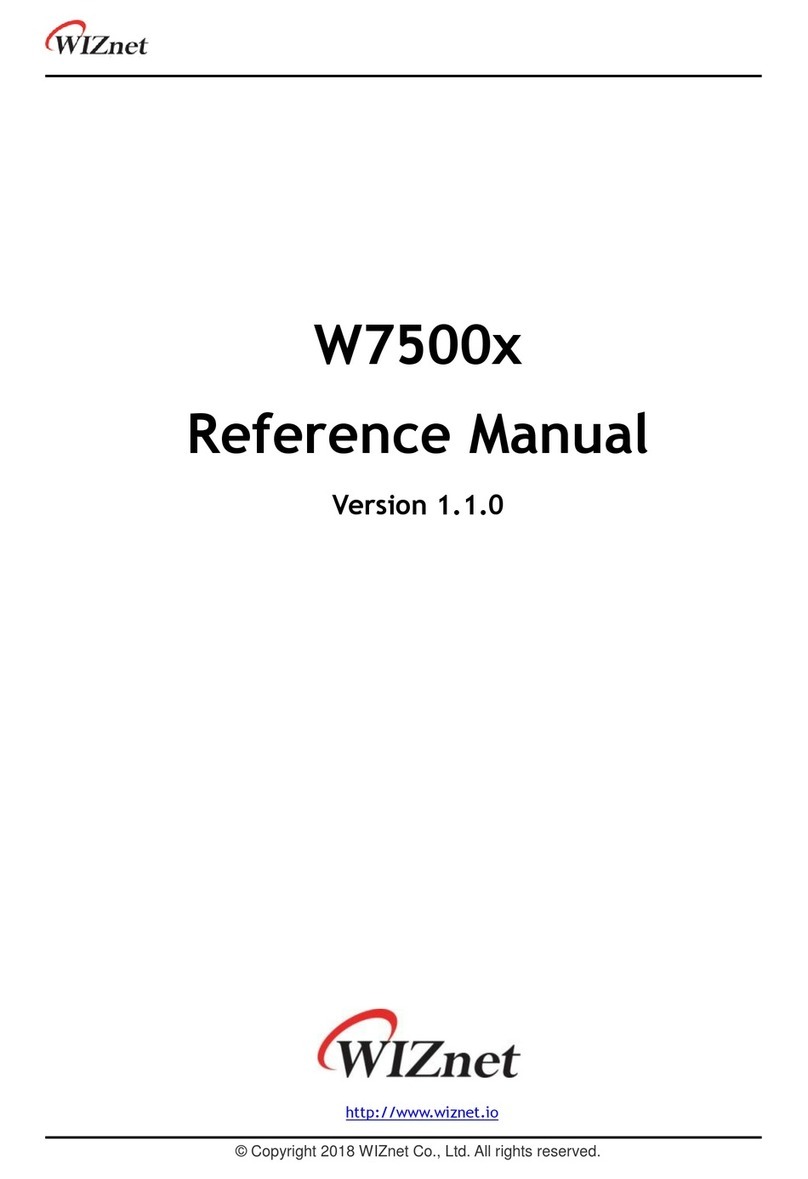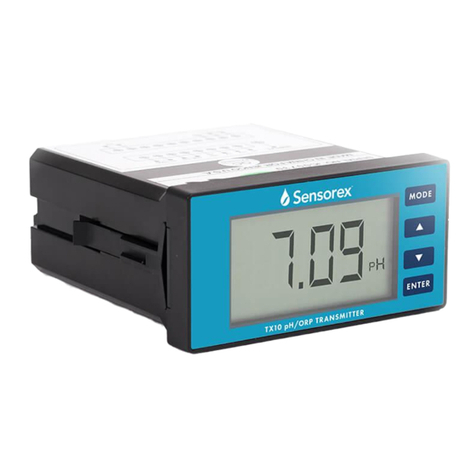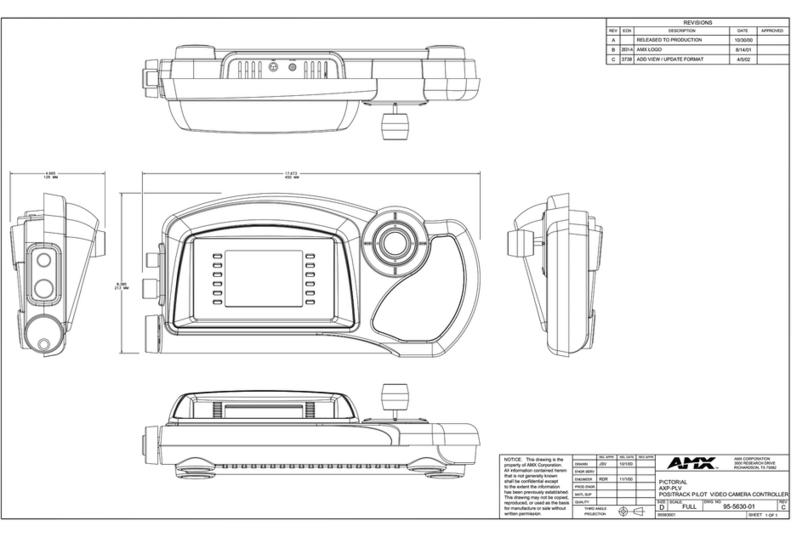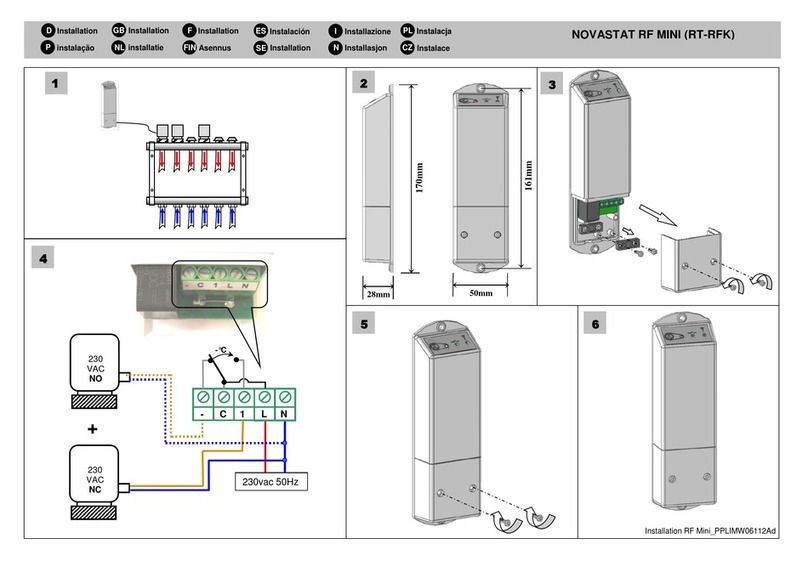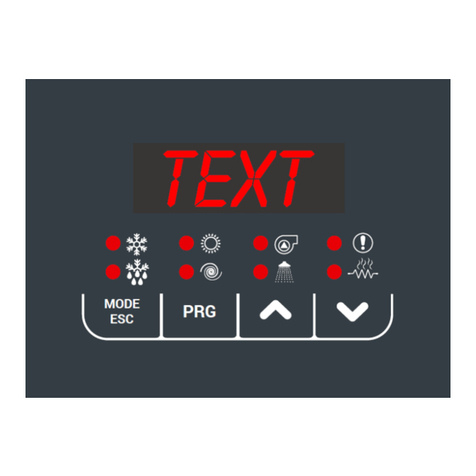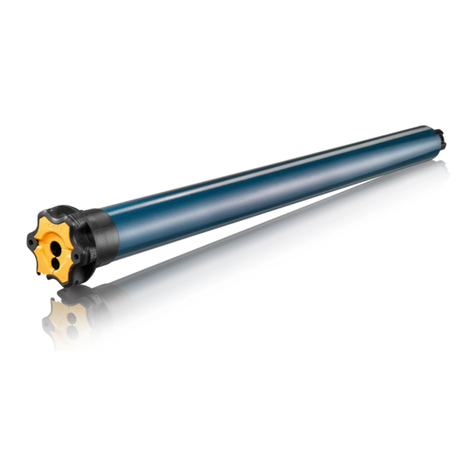
pg.10
9. Relay 2 set point value:
Same as “Relay 1 set point value”
10. Relay 2 hysteresis value:
Same as “Relay 1 hysteresis value”
G. Conductivity/Resistivity Calibration mode
The model CX20 uses 1-point calibration for conductivity or resistivity.
In the Measure mode, pressing [UP] key and [ENTER] key at the same time to allow the
meter to go to the Conductivity / Resistivity calibration mode.
At the Conductivity / Resistivity calibration mode, the “CAL” icon and a
conductivity/resistivity reading will display. Rinse the conductivity probe in distilled water
and immerse it into the standization solution. Allow temperature reading to stabilize, press
[UP] key or [DOWN] key to change this reading to that of the standization solution value,
then press [ENTER] key to save. Calibration is now completed.
H. Controlling the relays
1. Isolation voltage:
The maximum isolation voltage of the relay output contacts is 1500 VDC. The voltage
differential between the relay output contacts and the load should not exceed 1500 VDC.
2. Output load:
The current through the relay output contacts should not exceed 5 Amp at 115 VAC and
2.5 Amp at 230 VAC in order not to cause permanent damage to the relay contacts. This
rating is specified for resistive loads only.
3. Relay action, relay set point and hysteresis value:
Relay
Action
Effective RELAY-ON Set
Point
Effective RELAY-OFF Set
Point
HI S.P. + (1/2 H.V) S.P. – (1/2 H.V)
LOW S.P. – (1/2 H.V) S.P. + (1/2 H.V.)
S.P. = Relay Set point H.V. = Hysteresis value (Dead Band)
If the relay action is set to HIGH, the relay will turn ON at (Set Point +1/2 Hysteresis ), and will turn OFF at
(Set Point -1/2 Hysteresis ).
If the relay action is set to LOW, the relay will turn ON at (Set Point -1/2 Hysteresis ), and will turn OFF at (Set
Point +1/2 Hysteresis ).
There are two Independent relays the user can bind to the Conductivity or Resistivity mode. The user can
only bind the two relays to one reading mode at a time. The user can change this anytime by changing
option at the setting mode.













